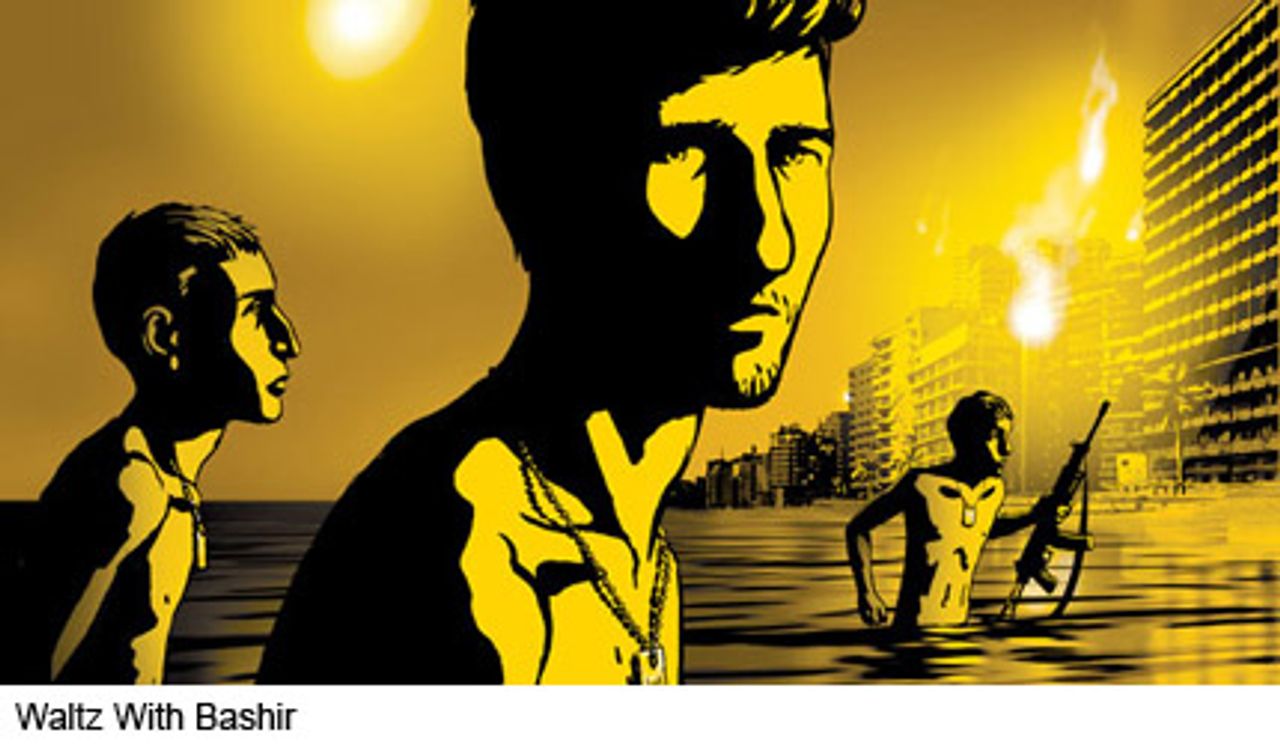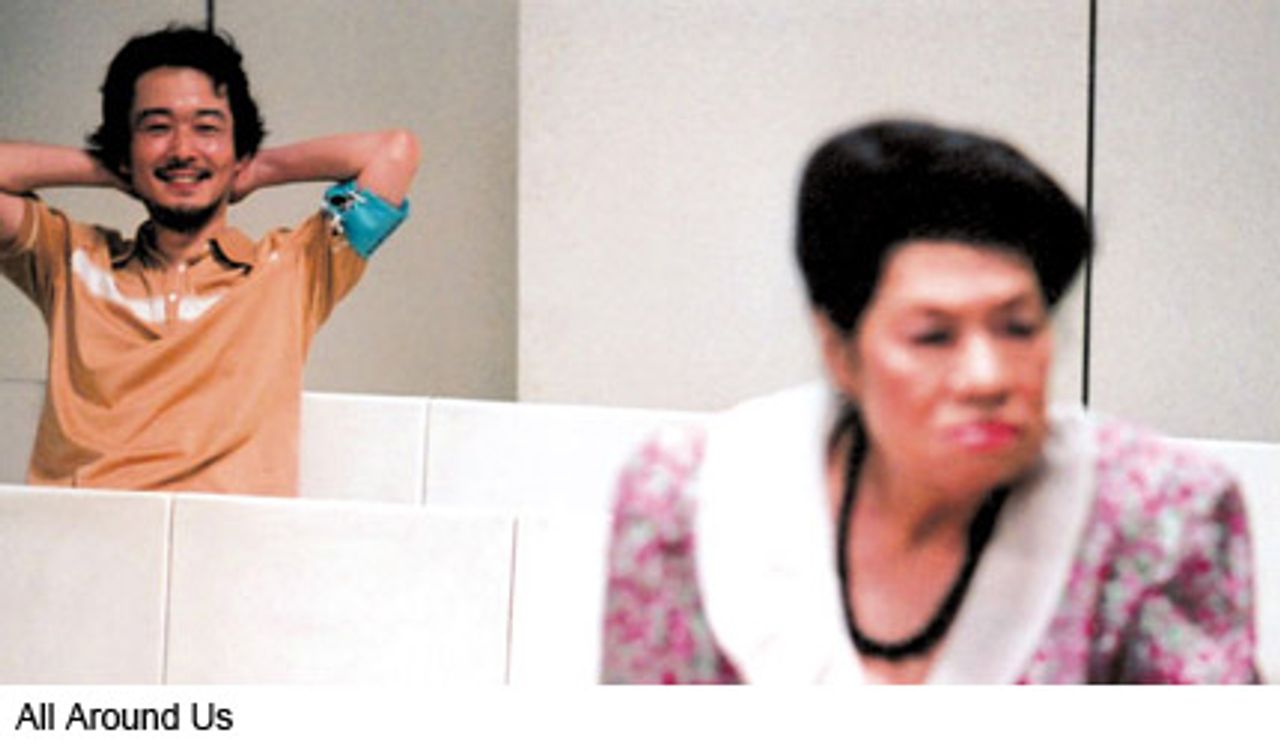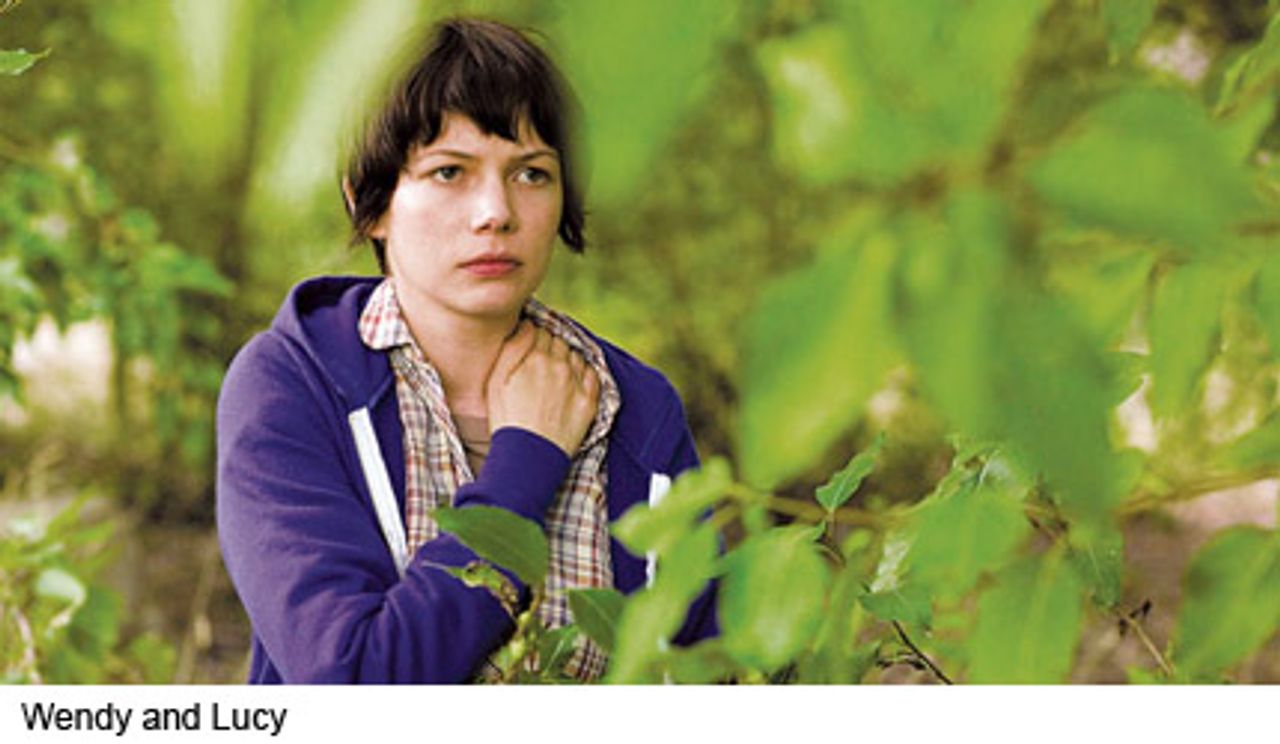This is the first of a series of articles devoted to the recent Toronto film festival (September 4-13).
A great many films are screened at the Toronto film festival, some 312 this year. We saw about forty-five. You always hope that you have selected the most interesting. Perhaps something truly extraordinary escapes, but it doesn’t seem that likely. As usual, we tended to see the films that are not going to show up in the local movie theater.
A large event like this combines culture and commerce, in complex and sometimes surprising ways. You overhear snatches of conversation on the street: “The only question was: is the money available?” The details of deals are worked out in hotel lobbies and restaurants; buyers and sellers haggle over cell-phones. It’s not the coarseness of the individuals and the conversations that are most discouraging—that’s to be expected, but the reality that the ‘products’ generally being negotiated over are often so negligible. If only distributors and producers were battling over something worth fighting for!
There’s nothing wrong with seeking to reach a large audience and accumulating the resources necessary for such an effort. In fact, there might be reason to be suspicious of the delicate souls who are repulsed by money, crowds and the realities of the film industry.
In an early poem, Pier Paolo Pasolini, before he was a filmmaker, thanked the working class residents of Rome for having taught him “how to be tough and ready/ in the confusion of the streets/ ... not ashamed to watch money counted/ ... to defend myself, to offend/ to have the world before my eyes/ and not just in my heart.”
Such realism and practicality, however, should not be an excuse for mediocrity or empty-headedness, with which the film industry and film festivals also abound.
One has to have something important to say, and this remains the biggest problem.
It would be easy, perhaps comforting, merely to offer a scathing portrait of the film industry and its hangers-on. There are many features of the industry and a large festival that are certainly not attractive: the self-importance of people who have never done anything important; the enormous waste of time, resources and talent; the pursuit of celebrity and the mania for the limelight; the general intellectual poverty, and so forth. But such criticisms, presented one-sidedly, can largely miss the point.
People are not predestined to exhibit these limitations. They are products of social circumstances and a cultural atmosphere not of their choosing. Given different, more invigorating conditions, many in the movie business would discover in themselves qualities they didn’t know they possessed. They would quite literally be different people. And such conditions will emerge.
Many individuals, even today, go into writing, directing or producing films for healthy reasons, because of the power and expressiveness of the medium. For someone to say, ‘Here, look, I’ve assembled these images because I want to show how human beings live and act together under these specific conditions,’ or how nature looks, or how a city functions, is entirely legitimate, and people have been flocking to look at such things for more than a century. And often getting something out of the experience.
If the images, in general, became less and less rich during the late 1980s and 1990s and the experience of watching the images less and less rewarding, that had substantial social and historical roots. Art is not about itself, but about life—and, inevitably, changing life—and discouragement and lack of inspiration took their toll.
The political and social reaction of the last several decades had its objective limits, and those have now been reached.
One indication of something new emerging is the artistic coming to terms with an old event, decades after the fact and apparently out of the blue. No one has said anything about the matter for years, it’s a settled issue, and then a startling work appears. How is to be explained? Not just on a psychological basis.
The uneasiness, the desire to settle accounts with the past in such a case expresses, in the final analysis, the fact that relationships and forms of consciousness, based on earlier conditions, have been undermined and made obsolete by new facts and conditions of life. In Hegel’s words, “one form of life has become old, and ... it cannot be rejuvenated, but only known.” Reality has matured and “made itself ready.”
The 1982 Israeli invasion of Lebanon killed an estimated 18,000 people. The Israelis also collaborated with the fascist Phalangists in the massacre of some 3,000 Palestinian men, women and children at the Sabra and Shatila refugee camps. The brutal operation was part of a global counter-offensive by the ruling classes, initiated in 1979-80 under the Jimmy Carter administration and broadly extended by Ronald Reagan. 1982 also witnessed the Malvinas War, ferociously prosecuted by the government of Margaret Thatcher, elected in May 1979.
Israeli director Ari Folman’s Waltz With Bashir was one of the most extraordinary and haunting films in Toronto. Folman has made an animated film that ends with the tragic events at Sabra and Shatila. The director says “it’s a completely autobiographical film.”

The film unfolds like this: a friend tells Folman of a recurring dream in which he is chased by a pack of 26 snarling, vicious dogs. The friend, Boaz, is certain it has something to do with his experiences as a soldier during the Lebanon invasion. When the Israelis were entering villages, they first “liquidated” the dogs, so they couldn’t give warning. Boaz shot 26 dogs during the invasion of Lebanon.
Folman, however, discovers he no longer has any memory of the Lebanon fighting. “That’s not stored in my system,” he says. Only one image remains, of him and his comrades, naked, calmly swimming in the sea. The absence of memory disturbs him, and he determines to track down those he fought with and fill in the blank space. “Memory takes us where we need to go,” he explains.
He first visits an old friend, Carmi, who now lives in Holland and has made a fortune selling falafels. Carmi remembers one of his first experiences in Lebanon, he and his fellow Israeli soldiers “shooting like lunatics” at an old Mercedes, in which they later discover the bodies of a whole family.
Folman explains, “I can’t remember anything.” He retains this one image. “What image?” asks his friend. “You’re in it.” This is the image of the soldiers emerging from the sea. Carmi says he doesn’t remember anything about the massacre at Sabra and Shatila. “That’s not stored in my system,” he says, echoing Folman.
In a taxi in the Netherlands, “everything comes back” to Folman. He continues to visit old comrades and they tell him about their experiences in Lebanon, many of them harrowing.
Folman eventually recounts how he and his unit marched into West Beirut, following the assassination of Phalange leader Bashir Gemayel, and how they took up positions around the Sabra and Shatila camps. The Phalangist forces arrived and claimed they were entering the refugee camps to “purge” them of Palestinian fighters. However, the vast majority of the latter had been evacuated on ships to Tunisia two weeks earlier.
Folman’s film makes clear that the Israeli command post was elevated high enough to see what was going inside the camps. For three days the fascist forces carried out their killings. A well-known Israeli television reporter learned of the massacre and telephoned Defense Minister Ariel Sharon. The future prime minister responded, “Thanks for bringing it to my attention. Happy New Year.” Sharon was later found guilty by an official inquiry of indirect responsibility for “ignoring the danger of bloodshed and revenge” and for “not taking appropriate measures to prevent bloodshed.”
A friend, a therapist, asks Folman, “What did you do?” He explains that he and his comrades sent up flares, which helped the Phalangists in their murderous work. “You took on the role of a Nazi, unwillingly.” The television reporter notes that the sight of Palestinians coming out of the camp with their hands above their heads reminded him of the famous image of Jews surrendering in the Warsaw Ghetto.
Waltz With Bashir is done with considerable artistry and intelligence. The images are deeply disturbing, hallucinatory, including Folman’s recurring memory of the unclothed soldiers, armed, emerging from the sea in front of a row of Beirut high-rises, under a frighteningly yellow sky.
An exposure of Zionist crimes, or a film simply this painfully honest, would be almost unthinkable in the American film industry at present. It will be interesting to see what happens to the film when it opens in the US in late December.
In an interview, Folman explained that Waltz With Bashir “follows what I went through from the moment I realized that there were some major parts in my life completely missing from my memory. ... I discovered a lot of heavy stuff regarding my past and meanwhile, during those years, my wife and I brought three kids into this world. This makes you wonder, maybe I am doing all this for my sons. When they grow up and watch the film, it might help them make the right decisions, meaning not to take part in any war, whatsoever.”
He added, “I believe that there are thousands of Israeli ex-soldiers that kept their war memories deeply repressed. They might live the rest of their lives like that, without anything ever happening. But it could always burst out one day, causing who knows what to happen to them. That’s what Post-Traumatic Stress Disorder is all about.”
For many people, over the past few decades, a variety of realities, social iniquities, crimes haven’t apparently been “stored in the system.” But they were there, nonetheless. Other processes, moods and illusions helped to exclude them from consciousness. What makes the truth about things come flooding in? A complicated combination of subjective effort and external stimuli, perhaps in the form of new and shocking events (in Folman’s case, perhaps a new war in Lebanon, the occupation of Iraq?). The subjective effort itself is objectively driven, an indication that whatever social facts underpinned and sustained the existing belief system have given way to something else.
Waltz With Bashir is the most conscious expression of this complex process.
There were numerous promising and sensitive films in Toronto. People see many things, many aspects of life, including many injustices and tragedies. At the same time, some of the same problems recur, from year to year, from film to film. It becomes a little tedious to register the same complaints.
We felt, with some legitimacy, that we had seen the same type of work this year perhaps ten or fifteen times: a sensitive, sincere, ‘humanistic’ work, hovering on one side or the other of the middle range artistically, often in response to one of the various traumas and tragedies in recent history—Snow (Bosnia), Firaaq (India), Return to Hansala (Spain-Morocco), Kabuli Kid (Afghanistan), Pandora’s Box (Turkey), Khamsa (France), Knitting (China), Katia’s Sister (the Netherlands), Cloud 9 (Germany), Sugar (US-Dominican Republic) and, with somewhat more unusual approaches, even Goodbye Solo (US) and Under the Tree (Indonesia).
Dernier Maquis (France), Aide-toi le ciel t’aidera (France) and Linha de Passe (Brazil) stood somewhat higher in our estimation.
The films with the sharpest social insight are not necessarily the ones at this point with the most interesting pictures of life.
This is not primarily the fault of the socially aware film writers and directors. The recent period has not been conducive to the treatment of social life in art. That was actively discouraged, dismissed as old hat and passé. Nobody who wanted to make a mark went in for that kind of thing. So there’s something a little stiff, a little stilted about most social filmmaking; it can almost seem the director is fulfilling a duty. Spontaneity, such as it is, largely comes elsewhere. But that, quite often, dissipates itself in minor works, on secondary themes.
The sign of a difficult period artistically, we still feel fortunate to catch glimpses of life, often sandwiched in between quite artificial or contrived elements. Glimpses: some scenes in a film, perhaps only one, or a single character.
It is a distinct pleasure to see some signs of real life in a film from Japan, All Around Us (Ryosuke Hashiguchi), even if the work as a whole is not satisfying. Mostly we have seen irritating, pretentious films from Japan in recent years, ‘timeless’ studies of depressed young men and women gazing into the mist or the woods—or into the misty woods—or stupid, self-indulgent gangster movies. You had no idea from any of these films what people were thinking and feeling in Japan, except the self-involved directors. We assumed that the ‘popular classes’ continued to exist there, although we never saw them in movies.
All Around Us is the story of a couple during the 1990s, when Japan suffered a severe economic slump. Kanao, “loose” and a risk-taker, is a courtroom artist for a television network and observes a series of trials of child killers and other seriously damaged individuals. His wife Shoko is much more formal; she marks on a calendar the days when they are scheduled to have sex. But when their child dies, Shoko goes into depression (yes, in this film too!). Kanao stands by her. Despite this description, there is a good deal of comedy.

The scenes in and around the courtroom are the best, with its eccentric cast of sketch artists and television employees, like the cynical Yasuda, who lurches around at a rapid rate, rarely saying a word. When he goes into hospital, Kanao visits him. “I thought you hated me,” the surprised Yasuda says matter-of-factly. “Not at all.” Yasuda crudely argues for life, and sex. “When you have something to treasure, treasure it,” he comments, grabbing himself.
During a big storm, Shoko and Kanao have things out. Normally he hardly talks. She speaks first, “I killed the baby,” which is not true of course. He says, “It was fate.” She asks, “Did it make you sad? “I thought it was too bad. I can’t talk about these things. ... When my old man hanged himself, I didn’t cry. People betray you. You can’t tell what’s in a person’s heart.” She attacks him. When she grows calm, she still seems lost, “I want things to be better ... Maybe never forgetting is the best we can do.” “You worry too much.”
These scenes are effective, others are less so. The filmmaker puts in too many complications and some of them simply clutter All Around Us. But we remember the ordinary, struggling Japanese (including, with odd affection, Shoko’s sleazy real estate agent brother, who goes broke during the film, and his vulgar, acid-tongued wife).
Again, these are not necessarily the best films, but they show signs of life. The Country Teacher (Bohdan Sláma), from the Czech Republic, is a bit of a melodrama about a young gay man from Prague who tries to escape his dilemmas by teaching natural science in a small rural school. There are some unconvincing or tired elements here, but the best thing is the sudden arrival of the young teacher’s former boyfriend, a well-heeled yuppie who lives in Germany. His selfishness and destructiveness bring the film to life for a time and speak to real life.

Wendy and Lucy is an American film, directed by Kelly Reichardt. Wendy (Michelle Williams) is a young woman on her way by car from Indiana to Alaska to look for work. In Oregon, things fall apart. Her car breaks down, she’s arrested for shoplifting and she loses track of her beloved dog.
Reichardt’s film is a trifle self-consciously minimalist, and there is perhaps too much about the girl’s tearful devotion to her pet, but it does something that few US films do at present, indicate how a large percentage of the population lives: not starving, but just hanging on by their fingernails, working at odd jobs or two or three jobs, without prospects, without a great deal of hope, although by no means crushed.

The images of the Oregon town are also truthful, with its rundown neighborhoods, paint-peeling houses, strip malls. Williams is touching.
There are moments in many films, but not many films that strike you as emotionally sincere, socially authentic and artistically complex.
We’ll have more to say about some of the films mentioned above, including an interview with Chus Gutiérrez, the director of Return to Hansala. Also, we need to discuss Mike Leigh’s Happy-Go-Lucky and Terence Davies’ Of Time and the City. We conducted an interview with the Dardenne brothers, whose Lorna’s Silence was presented at the festival. There is much to be said about this year’s films, even if a good deal of it is critical. That must indicate something.
To be continued
